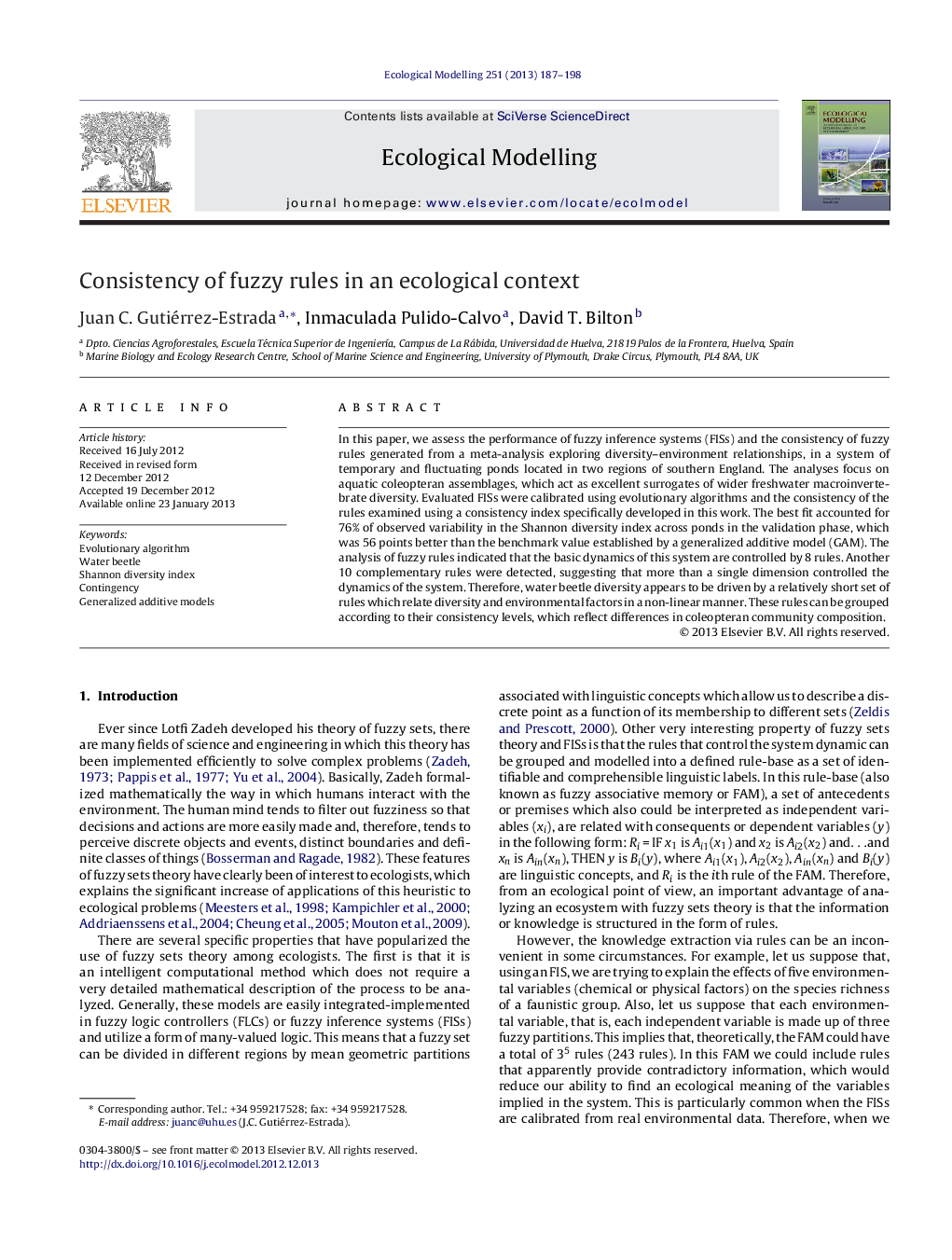| Article ID | Journal | Published Year | Pages | File Type |
|---|---|---|---|---|
| 4376153 | Ecological Modelling | 2013 | 12 Pages |
In this paper, we assess the performance of fuzzy inference systems (FISs) and the consistency of fuzzy rules generated from a meta-analysis exploring diversity–environment relationships, in a system of temporary and fluctuating ponds located in two regions of southern England. The analyses focus on aquatic coleopteran assemblages, which act as excellent surrogates of wider freshwater macroinvertebrate diversity. Evaluated FISs were calibrated using evolutionary algorithms and the consistency of the rules examined using a consistency index specifically developed in this work. The best fit accounted for 76% of observed variability in the Shannon diversity index across ponds in the validation phase, which was 56 points better than the benchmark value established by a generalized additive model (GAM). The analysis of fuzzy rules indicated that the basic dynamics of this system are controlled by 8 rules. Another 10 complementary rules were detected, suggesting that more than a single dimension controlled the dynamics of the system. Therefore, water beetle diversity appears to be driven by a relatively short set of rules which relate diversity and environmental factors in a non-linear manner. These rules can be grouped according to their consistency levels, which reflect differences in coleopteran community composition.
► We assess fuzzy models to explore beetle diversity–environment relationships in ponds. ► Fuzzy models evaluated were calibrated using evolutionary algorithms. ► The best fuzzy model explained more than 76% of diversity variance. ► The consistency of the rules was carried out with a new index developed in this work. ► Water beetle diversity appears to be driven by a relatively short set of fuzzy rules.
